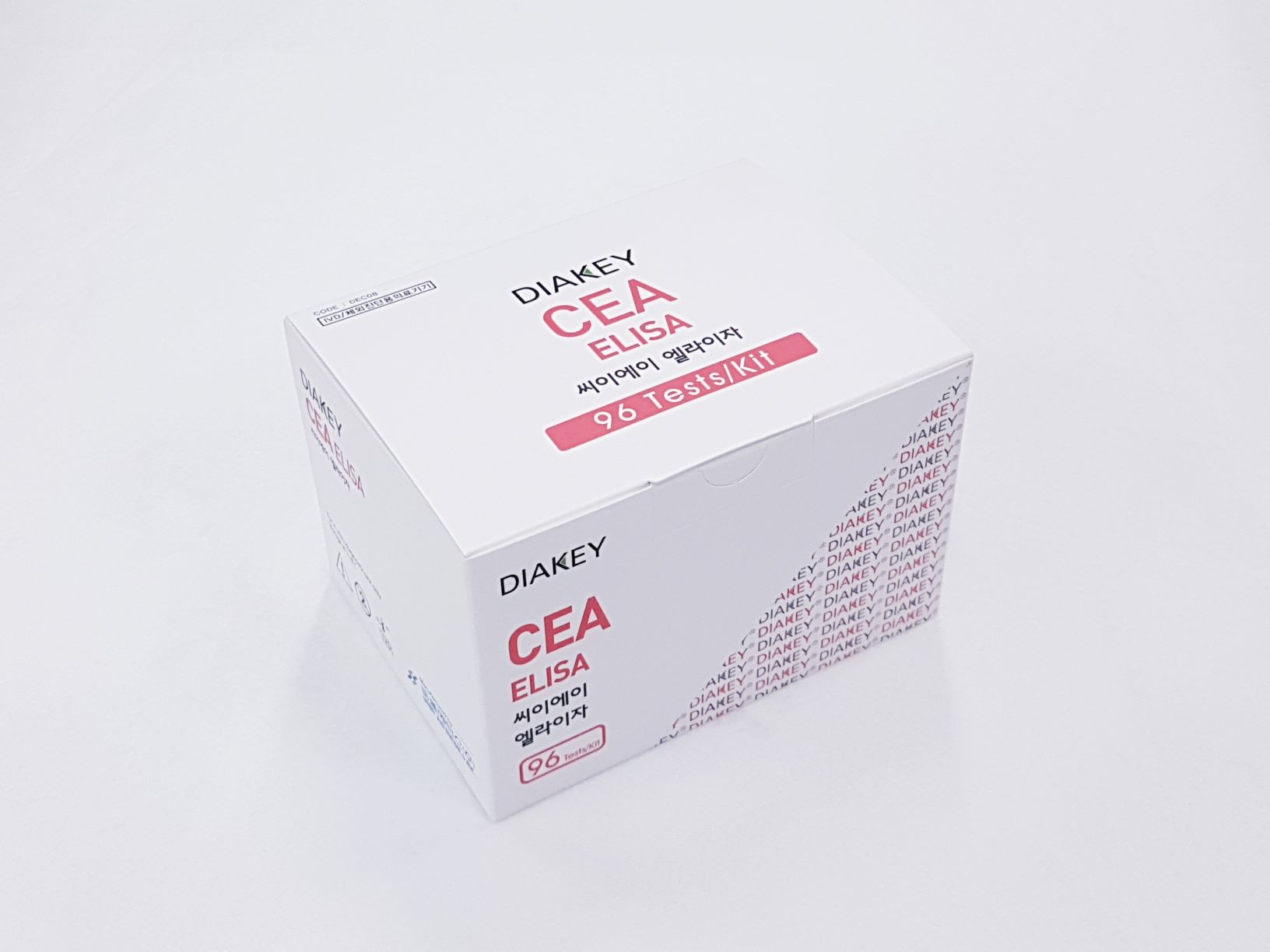Product

DIAKEY CEA ELISA
Intended Use
Enzyme immunometric assay for quantitative determination of carcinoembryonic antigen (CEA) in human serum or plasma
Introduction
The carcinoembryonic antigen (CEA) is a glycoprotein soluble in perchloric acid, first identified by Gold and Freedman in embryonic endodermal tissues of 2-6 month old feti and in epithelial tumors of endodermal origin (gastrointestinal tract). CEA molecule presents a high degree of heterogeneity, depending on the carbohydrate contents (50-60%) and also influenced by the purification method. Heterogeneity results clear also from molecular weight (175,000-2,000,000 daltons), sedimentation coefficient (6.2-6.8 S) and isoelectric point (p.l. 3-4), while it’s electrophoretic mobility is always beta. CEA immunological determination allowed evidencing of CEA-like molecules, a family of molecules with common antigenic determinants, synthesized by normal and pathological tissues, among which the most relevant one is NCA (Non-specific cross reacting antigen). Use of monoclonal antibodies has made it possible to definitely overcome the problem of the cross-reacting CEA like molecules when assaying CEA.
Principle of the Assay
The DIAKEY CEA ELISA is a solid-phase non-competitive immunoassay based upon the sandwich technique. Standards, controls, and samples are incubated together with a biotinylated and HRPO labeled Anti-CEA antibody in streptavidin coated micro stripes. CEA present in Standards or samples is adsorbed to the streptavidin coated micro strips by the biotinylated anti-CEA antibody during the incubation. Unbounded material is removed by a washing step. After washing, substrate reagent is added to each well and the enzyme reaction is allowed to proceed. During the enzyme reaction a blue color will develop if antigen is present. The intensity of the color is proportional to the amount of CEA present in the samples. The color intensity is determined in a microplate spectrophotometer at 450nm (reference 620nm). The CEA concentrations of samples are read from the calibration curve.
Handling Precaution
- Do not use mixed reagents from different lots.
- Do not use reagents beyond the expiration date.
- Use distilled water stored in clean container.
- Use an individual disposable tip for each sample and reagent, to prevent the possible cross-contamination among the samples.
- Rapidly dispense reagents during the assay, not to let wells dry out.
Use Precaution
- Wear disposable globes while handling the kit reagents and wash hands thoroughly afterwards.
- Do not pipette by mouth.
- Do not smoke, eat or drink in areas where specimens or kit reagents are handle.
- Handle samples, reagents and loboratory equipments used for assy with extreme care, as they may potentially contain infectious agents.
- When samples or reagents happen to be spilt, wash carefully with a 1% sodium hypochlorite solution.
- Dispose of this cleaning liquid and also such used washing cloth or tissue paper with care, as they may also contain infectious agents.
- Avoid microbial contamination when the reagent vial be eventually opend or the contents be handled.
- Use only for IN VITRO.

